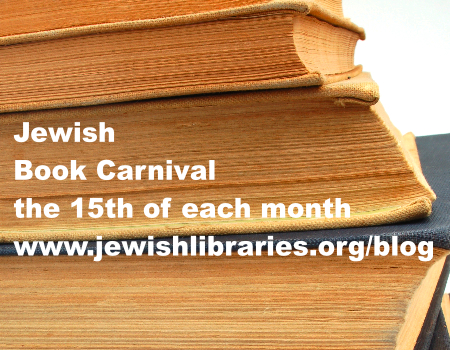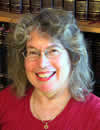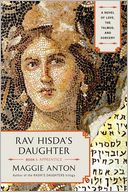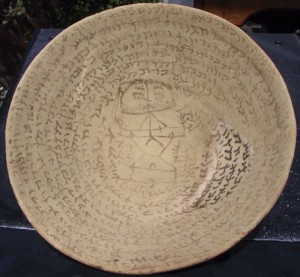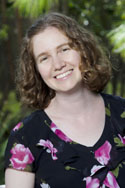 I recently had the pleasure of interviewing Dr. Sarah Bunin Benor, HUC Associate Professor of Contemporary Jewish Studies about her book.
I recently had the pleasure of interviewing Dr. Sarah Bunin Benor, HUC Associate Professor of Contemporary Jewish Studies about her book.
SFS: Congratulations on the publication of your new book Becoming Frum : How Newcomers Learn the Language and Culture of Orthodox Judaism
SBB: Thanks!
SFS: I find that I’m struggling to form some of the questions. Do I use your terms of BT (ba’alei teshuvah, i.e. Orthodox Jews who grew up non-Orthodox) and FFB (frum, i.e. Orthodox, from birth)? or try to translate them?
SBB: Might as well use those terms and translate them on first use.
SFS: In your book, you describe how newly Orthodox Jews have to not only adopt the laws and customs of the Frum community, but also their speech patterns. What makes their language different?
SBB: The English speech of Orthodox Jews in America includes hundreds of words from Hebrew, Aramaic, and Yiddish, as well as other distinctive features, like chanting intonation patterns, a hesitation click from Israeli Hebrew, and Yiddish structures like “staying by us” and “what do we learn out from this.” Orthodox Jews, especially those toward the “Black Hat” end of the continuum (in contrast to Modern Orthodox), tend to pronounce Hebrew words in the Ashkenazic way, like ha-LUH-cha instead of ha-la-CHA (Jewish law) and SUK-kiss instead of su-COAT (Holiday of Tabernacles). When Jews become Orthodox, they tend to pick up many of these features. Some of these newcomers go overboard in the use of these features, and others are more selective, using only those that feel authentic to them.
SFS: Many of these features sound like things my Yiddish speaking grandparents might have said. How did they become engrained as religious speech?
SBB: Good question. Yiddish is associated with Orthodox Jews for a few reasons. Although Orthodox communities have been in the US for centuries, a significant percentage immigrated to the US in the post-war era. So many of the middle-aged Orthodox Jews today are the children of immigrants rather than the grandchildren of immigrants. Second, and perhaps more importantly, Orthodox Jews maintain a strong ideological connection to Eastern European Jews. Many of the cultural practices I write about in my book – not just language but also food and dress – are influenced by the traditions of the recent Eastern European past.
SFS: When FFBs and BTs interact with the non-Orthodox world, do they use the same “frum-speak”? (what do you call it) or do they revert to more standard English?
SBB: Most FFBs and BTs are aware of most of the distinctive linguistic features of frumspeak (Orthodox Jewish English), and they avoid them when speaking to non-Orthodox Jews and non-Jews. But some, especially new BTs who want to highlight their new identity, use them consciously. Some BTs and FFBs use some features unconsciously, such as “staying by them” and some of the distinctive pronunciations.
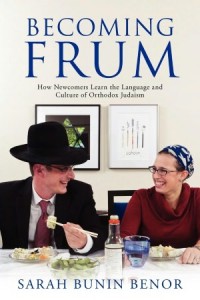 SFS: How did you decide to use the word “frum” in your title
SFS: How did you decide to use the word “frum” in your title
SBB: I considered several titles without the use of “frum,” but I decided to use it because I wanted to give the reader a sense of the insider nature of language in Orthodox communities. I ran the title by many colleagues, including some with little knowledge of Jewish studies. Some felt that the use of “frum” was off-putting, but most found it intriguing and advised me to keep it.
SFS: and how much do you pepper your own speech with Hebrew or Yiddish words?
SBB: Frequently. But some of the words I use are different from those I heard in the community of my research. I say “drash” (interpretation, sermon) and “tikkun olam” (repairing the world), whereas those words are not common among Orthodox Jews. I did pick up some new words during my research, like “chas v’shalom” (God forbid), which I still use regularly.
SFS: I assume that there isn’t as extreme speech differences in other Jewish communities, e.g. Reform, Conservative, but do they also have distinctive characteristics?
SBB: Definitely. That will be one of the focuses of my 2nd book. Their distinctive linguistic features are mostly just Hebrew and Yiddish words.
SFS: One piece of your research that I found fascinating was that Jews who self-identify as “Black hat” use Ashkenazi (Central/East European) pronunciation even if their own family background is Sephardic (from Spain/Portugal) while some people who identify as Modern Orthodox use the Sephardic/Israeli pronunciation. Is this a rejection of their family history?
SBB: Note that many Modern Orthodox Jew do use Ashkenazi pronunciation, but that is one way to look at it, and maybe their parents feel that way.
SFS: What was the most surprising linguistic tidbit you encountered during your research?
SBB: Probably the periphrastic verbs. Sentences like this are common: “We do all that shtik to be mesameach the chossen and kallah” (we do those routines to entertain/gladden the groom and bride). It sounds weird in general American English to use “to be” with a transitive verb, and you don’t hear this construction much among non-Orthodox Jews.
SFS: You seemed to incorporate using social media tools as part of your research. What did you use and how did it work?
SBB: I used frumster.com to research some of the categories of the Orthodox continuum: Modern Orthodox Liberal, Modern Orthodox Machmir, Yeshivish Modern, and Yeshivish Black Hat. With permission from the Frumster staff, I culled data from profiles (anonymously) and checked for correlations between these categories and various practices, like men’s tzitzit wearing, women’s hair coverings, and Yiddish knowledge. I also used data from blogs. But most of that research came after my initial ethnographic study, which was in 2001-2. Back then websites were not as common, and facebook and twitter did not exist.
SFS: I know that you also put a lot of thought into the book cover. How did you decide on this image of Jews eating sushi?
SBB: I wanted an image of BTs doing something not common among black-hat FFBs, like snowboarding or eating some exotic food. Most exotic foods wouldn’t be recognizable in a picture, but sushi is. Ironically, sushi is becoming very common among Orthodox Jews, so the sushi won’t immediately identify these Jews as BTs. But I still think it conveys what I want to convey: that some BTs come up with unique cultural combinations.
SFS: Thank you for taking time to speak with me. I look forward to your next book!

